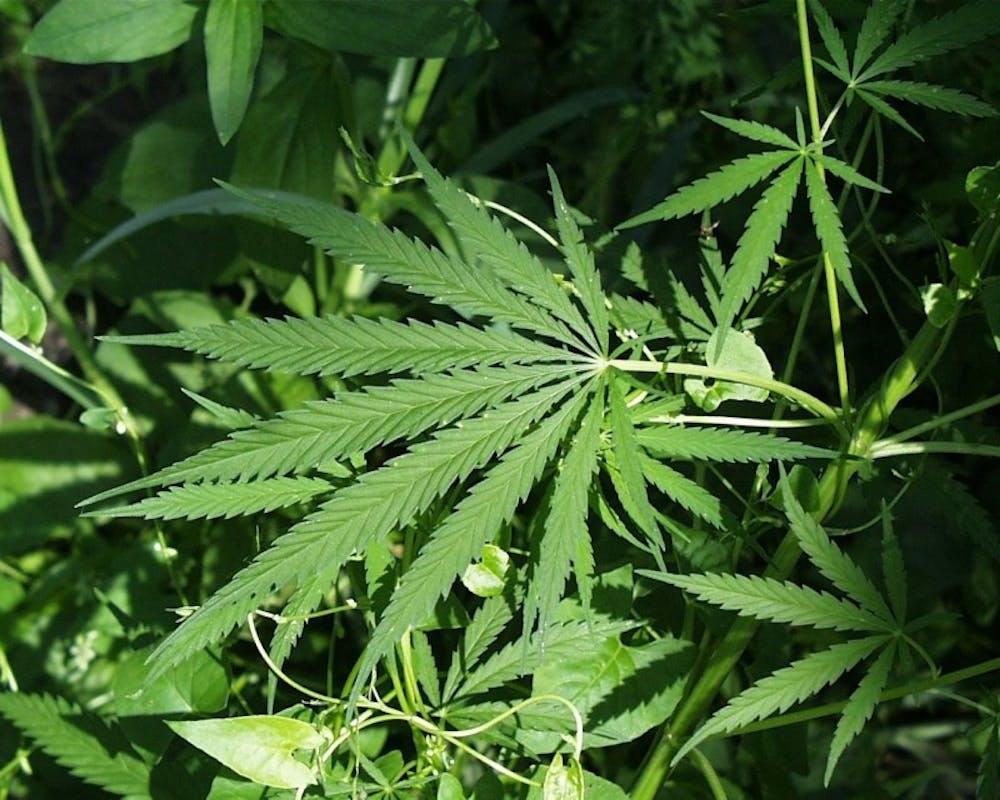Editor's note: This article was originally published in April 20, 2016 and does not reflect all the current states in 2017 that have since changed their marijuana laws. Alaska, California, Massachusetts, Maine and Nevada have since legalized marijuana for recreational use. Arkansas, Florida, Louisiana, North Dakota and Ohio have legalized medical marijuana.
In 2013, the Huffington Post reported on the story of the origin of “420,” tracing its origins back to the '70s and a group of boys called the “Waldos.”
The short story of its origin goes like this: a group of boys, the Waldos, heard of a Coast Guard service member who could no longer tend to his marijuana plants near the station. So, the Waldos sought out the crop.
Every day after school, they would meet up at 4:20 p.m. after practice to look for the crop in a ’66 Chevy Impala. Alas, they never found the crop, but had a good time smoking the entire time they were looking for it.
From then on, they used "420" as a code for meeting up to smoke, and eventually the term was picked up by the band The Grateful Dead as well as High Times magazine. It was popularized from there.

Pennsylvania becomes 24th state to legalize medical marijuana
Gov. Tom Wolf signed the legislation April 17, 2016.

Patients must receive a certification from a physician registered with the Department of Health and have a valid ID issued by the department that includes their name, address and date of birth. A patient must be diagnosed with one of the 17 conditions outlined in the bill.
Medical marijuana may only be dispensed as a pill, oil, tincture or liquid; in a topical form, such as a gel, cream or ointment; or in a form medically appropriate for vaporization or nebulization. Patients will not be able to legally obtain marijuana in a form they could smoke.
The bill imposes a 5 percent tax on the gross receipts a grower/processor gets from the sale to another grower, processor or a dispensary. The sales are exempt from the state sales tax.
— AP

WHY IS IT ILLEGAL ON A FEDERAL LEVEL?
Marijuana was made illegal on a federal level in 1937 by the Roosevelt administration and marijuana’s main opponent, Harry J. Anslinger, the director of the Federal Bureau of Narcotics.
According to drugwarrant.com, Anslinger was in charge of a new government agency and saw marijuana as the perfect opportunity to see growth in his department since opiates and cocaine were not as large of a problem. Because of this opportunity for growth, he set out to make pot illegal.

Opposers of marijuana, like Anslinger, would use scare tactics to make the public believe marijuana was a dangerous and powerful drug despite having no medical evidence to support their theories.
According to the Huffington Post, Anslinger convinced people there were a few stages to marijuana usage:
1. User falls into a delirious rage
2. User becomes “gripped by dreams of an erotic character”
3. User loses “power of connected thought”
4. User becomes insane
Anslinger reached out to 30 scientists to get backing on his ideas of marijuana’s effects, but only one responded with an answer Anslinger liked. He used that doctor to convince Americans of the dangers.
These statements put America into a panic. The U.S. government sprung into action, making marijuana illegal and urging other countries to follow suit.
Many countries refused to do so, including Mexico, upsetting the U.S. Mexico only gave in once the U.S. stopped all sale of legal painkillers to the country and people were dying in hospitals in terrible pain.






